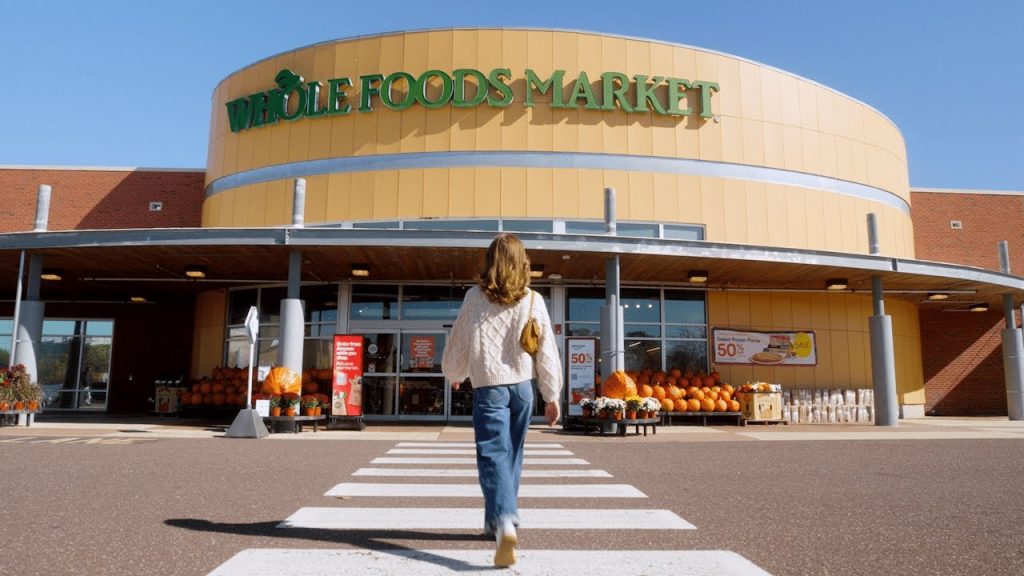Amazon’s Innovative “Store Within a Store” Concept Transforms the Whole Foods Experience
In a significant move that carefully balances technological innovation with brand identity, Amazon unveiled its new “store within a store” concept for Whole Foods Market on Wednesday morning. This thoughtful integration represents one of the most substantial collaborations between the two companies since Amazon’s $13.7 billion acquisition of Whole Foods in 2017. The concept, which was first reported by The Wall Street Journal, elegantly addresses a longstanding challenge: how to introduce popular mainstream brands into Whole Foods without compromising the grocer’s well-established organic and natural-foods identity that loyal customers cherish.
The innovative approach centers around interactive digital screens strategically placed on Whole Foods shelves. These screens serve as portals to an expanded Amazon selection, allowing shoppers to simply scan a QR code to browse and order items not traditionally found in Whole Foods stores – products like Kraft Mac & Cheese, Tide Pods, and Pepsi. The beauty of this system lies in its convenience; customers can complete their regular Whole Foods shopping experience and then collect these additional items from a dedicated counter as they exit the store. This thoughtful design maintains the distinct shopping atmosphere that Whole Foods customers value while simultaneously expanding product accessibility – a delicate balance that has proven challenging since the acquisition.
Behind this seamless customer experience lies an impressive technological foundation. Each participating Whole Foods location houses a 10,000-square-foot automated “micro-fulfillment center” powered by technology from Silicon Valley startup Fulfil. Within these centers, robotic systems efficiently retrieve items from Amazon’s expanded inventory, including popular snacks, cleaning supplies, frozen foods, and personal care products that wouldn’t typically align with Whole Foods’ strict ingredient standards. The sophisticated system prepares orders within minutes, ensuring they’re ready for pickup by the time customers complete their primary shopping. This marriage of robotics and retail represents the kind of technological integration that Amazon CEO Andy Jassy has been pursuing across the company’s diverse operations, especially in the notoriously challenging grocery sector.
The new concept is currently being tested at a Whole Foods store in Plymouth Meeting, Pennsylvania, with Amazon confirming plans to expand to additional locations after gathering customer feedback. This measured approach reflects the leadership of Whole Foods CEO Jason Buechel, who now oversees all of Amazon’s grocery operations. Under Buechel’s guidance, the company is carefully bringing more of Amazon’s technological expertise to the Whole Foods experience while honoring the brand’s distinctive identity and values. It’s worth noting that this isn’t Amazon’s only experiment in this space – The Wall Street Journal also reported on a separate trial in Chicago where Amazon replaced a coffee shop in a flagship Whole Foods’ lobby with a 3,800-square-foot “Amazon Grocery” kiosk selling mainstream brands like Doritos and Chips Ahoy.
Amazon’s journey in the grocery business spans nearly two decades, dating back to the launch of Amazon Fresh delivery in the Seattle area in 2007. The grocery industry presents a unique challenge that has both frustrated and fascinated the tech giant – razor-thin margins combined with massive volumes create an operational puzzle that requires both technological innovation and deep retail expertise. Recent successes with initiatives offering perishable groceries for free same-day delivery as part of unified Amazon.com shopping carts have shown promise, with Jassy describing this approach as a “game changer” during the company’s recent earnings call. The new Whole Foods integration represents another thoughtful step in Amazon’s evolving grocery strategy.
This “store within a store” concept elegantly addresses a fundamental tension in modern retail: how to honor established brand identities while expanding consumer choice through technological innovation. For Whole Foods shoppers, the experience maintains the distinctive atmosphere and product standards they’ve come to expect, while discreetly offering access to mainstream products many households rely upon. For Amazon, it represents a sophisticated application of its technological and logistical capabilities within physical retail spaces. And for the broader retail industry, it offers a compelling case study in how traditional shopping experiences can be thoughtfully augmented rather than replaced by digital innovation. As this concept expands to more locations, it will likely serve as a template for how legacy retailers can embrace technological transformation while preserving the core values that earned customer loyalty in the first place.


